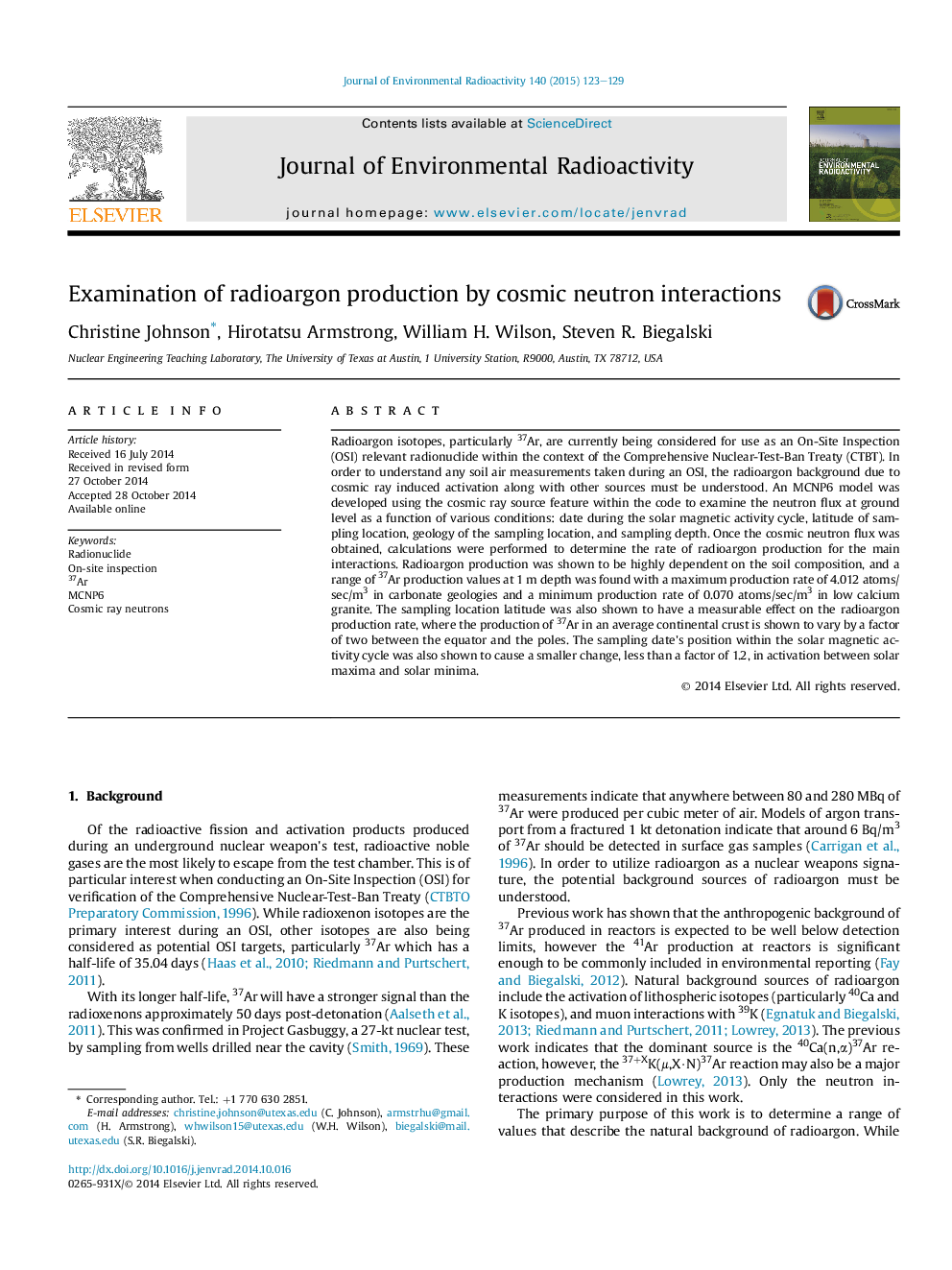| Article ID | Journal | Published Year | Pages | File Type |
|---|---|---|---|---|
| 8082517 | Journal of Environmental Radioactivity | 2015 | 7 Pages |
Abstract
Radioargon isotopes, particularly 37Ar, are currently being considered for use as an On-Site Inspection (OSI) relevant radionuclide within the context of the Comprehensive Nuclear-Test-Ban Treaty (CTBT). In order to understand any soil air measurements taken during an OSI, the radioargon background due to cosmic ray induced activation along with other sources must be understood. An MCNP6 model was developed using the cosmic ray source feature within the code to examine the neutron flux at ground level as a function of various conditions: date during the solar magnetic activity cycle, latitude of sampling location, geology of the sampling location, and sampling depth. Once the cosmic neutron flux was obtained, calculations were performed to determine the rate of radioargon production for the main interactions. Radioargon production was shown to be highly dependent on the soil composition, and a range of 37Ar production values at 1Â m depth was found with a maximum production rate of 4.012Â atoms/sec/m3 in carbonate geologies and a minimum production rate of 0.070Â atoms/sec/m3 in low calcium granite. The sampling location latitude was also shown to have a measurable effect on the radioargon production rate, where the production of 37Ar in an average continental crust is shown to vary by a factor of two between the equator and the poles. The sampling date's position within the solar magnetic activity cycle was also shown to cause a smaller change, less than a factor of 1.2, in activation between solar maxima and solar minima.
Related Topics
Physical Sciences and Engineering
Energy
Nuclear Energy and Engineering
Authors
Christine Johnson, Hirotatsu Armstrong, William H. Wilson, Steven R. Biegalski,
